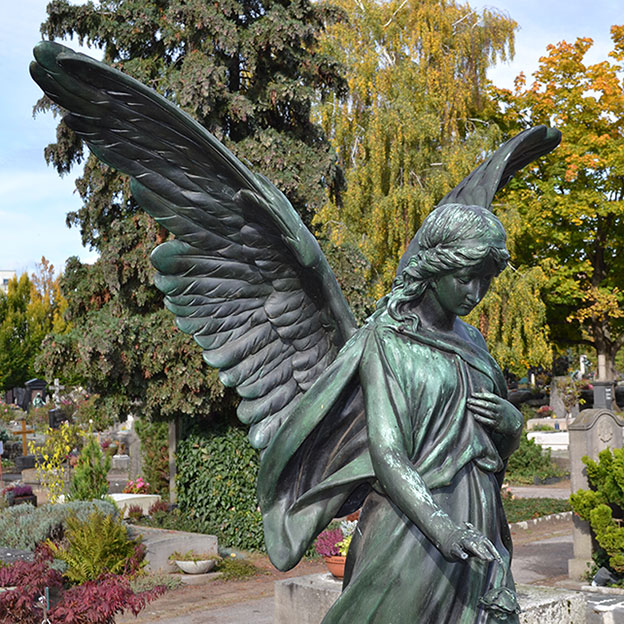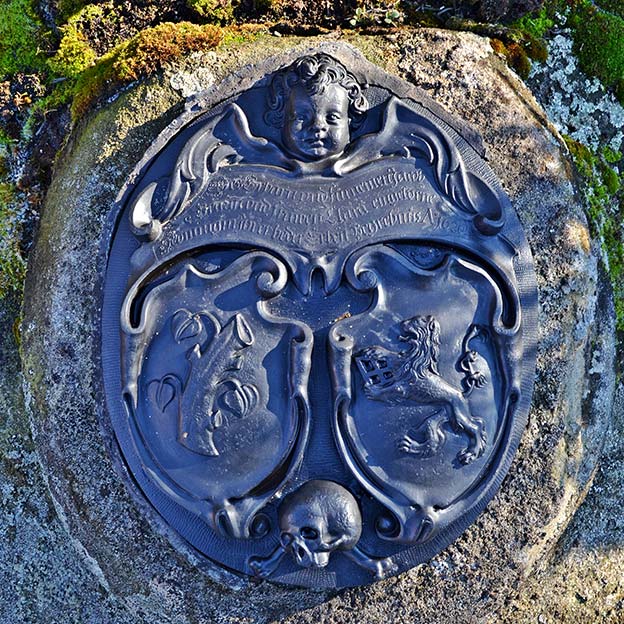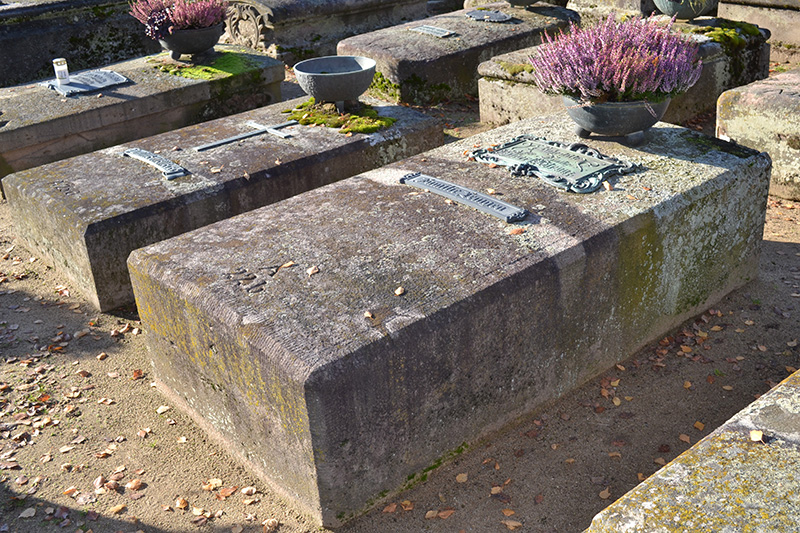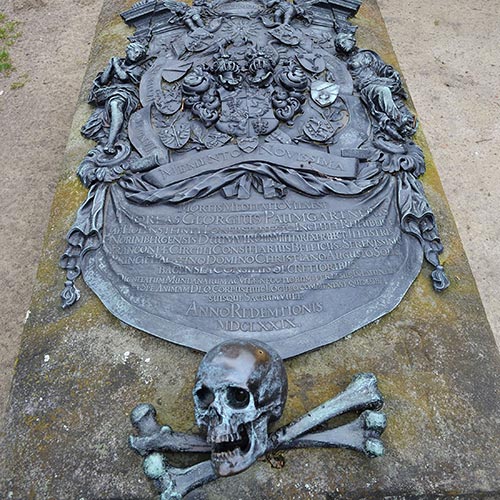The craft of the bronze and brass caster had flourished in Nuremberg over several centuries, and so the quality of these epitaphs was extraordinary. The inscriptions and imagery represent the upper strata of Nuremberg’s urban society from the early 16th century to the present. They not only include famous names such as Albrecht Dürer or Willibald Pirckheimer, but also important persons such as the composer Johann Pachelbel and Johann Philipp Harsdörffer, member of the language association of the “Pegnesischer Blumenorden”, a poets’ association which still exists today. A memorial plaque also honours William Wilson, the first engine driver working on the railway between Nuremberg and Fürth.
Artistically relevant epitaphs from six centuries have been preserved in both cemeteries. Each epoch may be recognised by its design language and characteristics. From the 16th to the 19th century, the epitaphs consisted of an inscription stating the deceased’s life data, profession and sometimes a short biography and a coat of arms or a house or master craftsman’s symbol. Sometimes decoration with ornaments, depictions of biblical topics or popular depictions of the name (Martin Peller, J I/ 1404 – Saint Martin) were complemented by a representation of the donor family. In addition, the epitaphs often also refer to the deceased’s profession. Thus the tools of their trade or the products of their work speak for themselves (see e.g. the communal grave of the carpenter journeymen of 1622 with a depiction of compass, square, chisel, mallet, axe and plane as the most important carpenters’ tools R 268).
A so-called „eloquent coat of arms“ is an amusing representation of the “occupant’s” name (Bauch – belly J I / 1619).
While in the late 20th century, there was an increase in mass-produced epitaphs, there was an equally strong trend towards more individualisation of memorial plaques. In order to both protect the existing and allow new additions, a committee has been in charge of granting permission for epitaphs, as has been the custom for centuries. In 2019 the craft of creating epitaphs was included in the Bavarian list of intangible cultural heritage.




